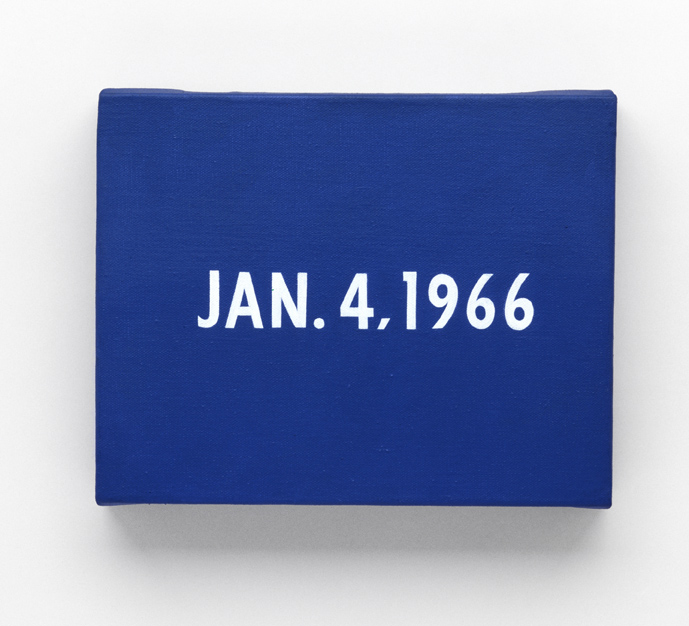
On Kawara, JAN. 4, 1966, “New York’s traffic strike.”
From Today, 1966–2013; photo courtesy David Zwirner, New York/London
A visit to the Guggenheim’s On Kawara survey prompts Ben Davis to consider how ahead of his time the conceptual artist was: “He was making art about the ‘quantified self’—the contemporary self-improvement craze for tracking and charting one’s personal data—not just before the fitbit, but before the handheld calculator.”
- Ai Weiwei will direct a segment of the ensemble film Berlin, I Love You via Skype as part of the Berlin International Film Festival. Confined to Beijing, he’ll work with producer Claus Clausen to tell the story of Ai Lao, Ai’s six-year-old son, who lives in Berlin. Part of the Cities of Love series, the script was written by Wang Fen, an independent documentary filmmaker and Ai Lao’s mother, who’ll help coordinate the shoot.
- “We’ve entered a moral vacuum in the post-9/11 era,” said Citizenfour filmmaker Laura Poitras upon receiving the IF Stone Medal for Journalistic Independence at a Harvard awards ceremony February 5. She says her films are her effort “to respond to that moral vacuum. To say something.” Harvard’s Nieman Foundation for Journalism also gave Democracy Now’s Amy Goodman an IF Stone Lifetime Achievement Award at the ceremony.
- Despite the ubiquity of DIY photos, we still value the professionally-made image, new research by National Press Photographers Association finds: shots by pros were more likely to be shared—and remembered—than amateur images.
- Following arrests in January over a planned open-mic art installation in Havana’s Revolution Square, artist Tania Bruguera‘s troubles appear to be far from over: her passport has been confiscated, her phonecalls are being monitored, and she says that while she’s free to move about the island, her movements are tracked by a government car.
- Such tab-keeping happens in the US, too, of course: Molly Crabapple, an artist who has illustrated everything from Occupy Wall Street to Khalid Sheikh Mohammed’s hearings at Guantanamo, reveals that she’s been closely watched by the feds. Her FBI file is 7,526 pages long—most of which she’s yet been able to see.
Follow Art News From Elsewhere on the Walker Art Center homepage or via @walkermag, the Walker’s editorial-focused Twitter feed.



